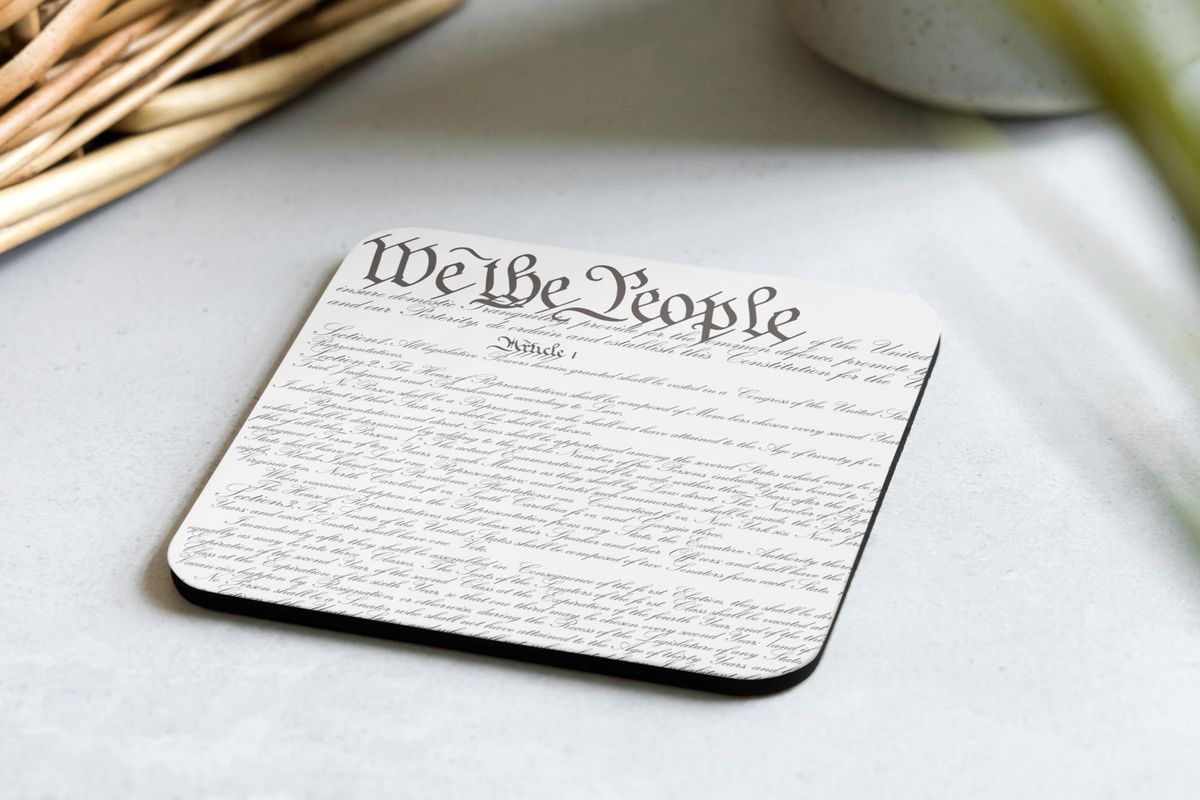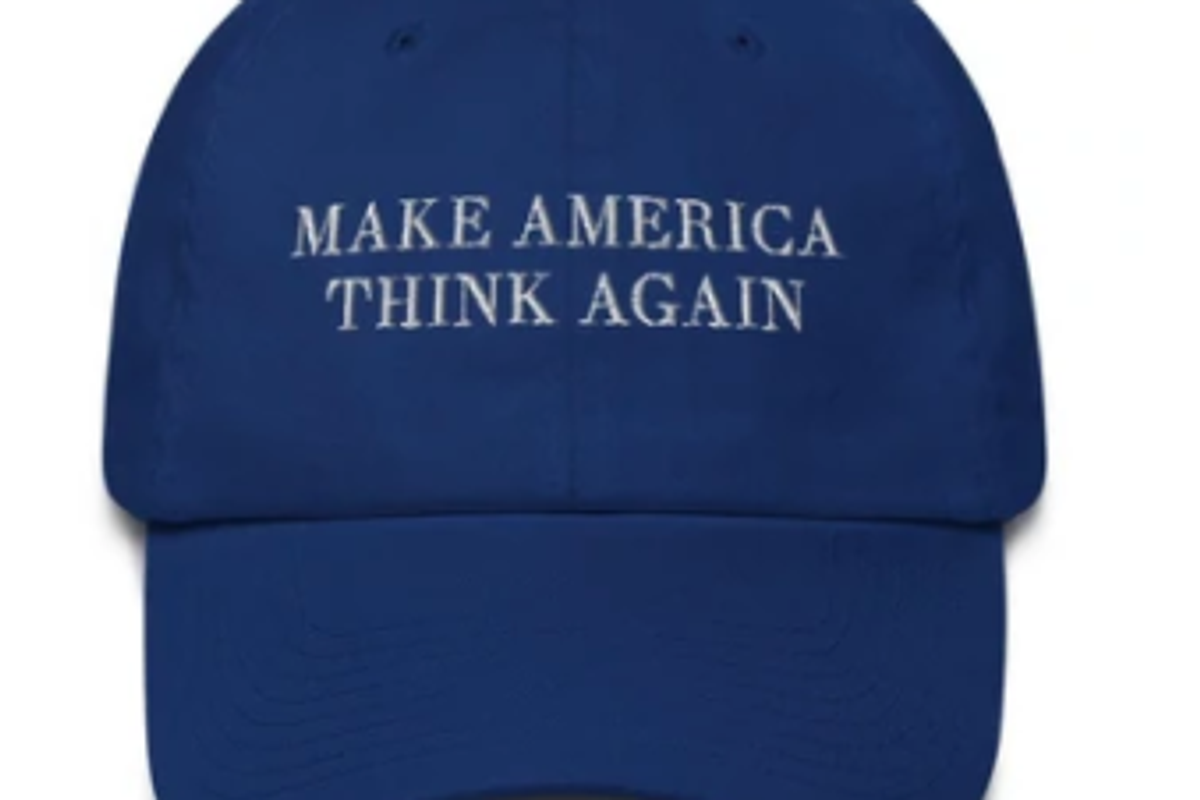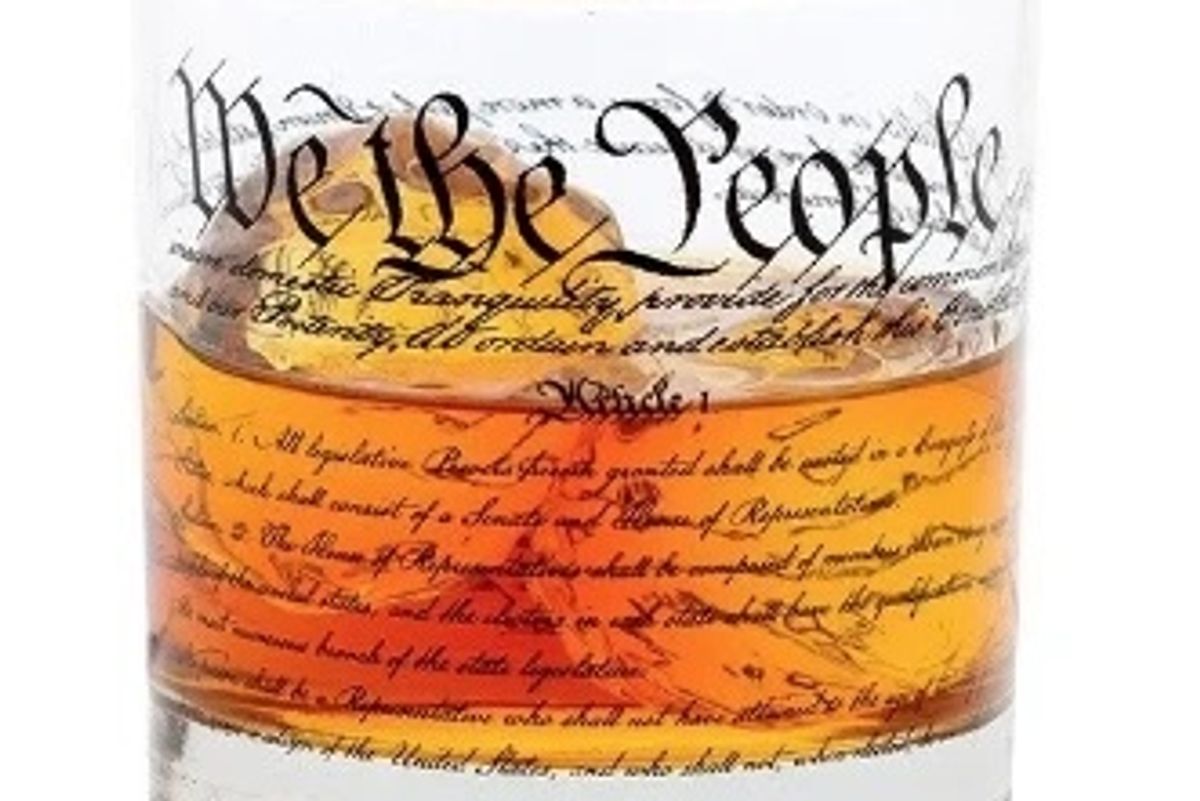If Republicans 'Back The Blue,' Why Does Their Budget Defund The Police?

Austin police officers kneel in response to demonstration over killing of George Floyd in 2020
In the summer of 2020, an ominous design began to exceed the boundaries of Trump World: bumper stickers, tee shirts, banners, and hats adorned with a black and white American flag. A middle stripe that should have been white was instead a bright, royal blue. Initially designed in 2014 as a symbol of support for policing by University of Michigan student Andrew Jacob, sales at Thin Blue Line USA surged as urban police battled angry anti-racist protesters in the summer of 2020.
For people my age, the Serpico generation, it was impossible to see such imagery, however well designed, as anything but extremist. “The thin blue line” was a term popularized in the 1950s by William Parker, the Los Angeles chief of police who warned the public that only the police stood between them and chaos. The phrase was also code for segregation in the North, and the brutal policing of Black people that enforced the racial separation of neighborhoods.
But the phrase also evoked the ways that cops preyed on underground economies, which also tended to be Black and Latino. Court cases taught the public about something called “blue wall of silence,” a code by which police protected each other from the laws they were sworn to uphold.
While supporting the police is not exactly a “white thing” (after all, people who aren’t white don’t want to be the victims of crime either), this long history of racism means that there was a pre-existing bond between the Republican party’s right wing and police institutions even before 2015, when Donald Trump launched his MAGA movement. Criticisms of police violence that flared in the final years of the Obama administration proved to be the perfect foil for this alliance: in response, Trump and extremist Republicans urged their voters to “back the Blue.” In a deployment of law-and-order politics that harks back to Richard Nixon’s 1968, in Trump World, the police were always right—and anyone who said otherwise supported crime.
A weak man who tries to appear tough, Donald Trump has always been fond of going before large crowds and murmuring over and over, “I love the police. I love the police.” And yet, like many policies he associates with his brand, Trump has never taken any real interest in policing itself: how it’s done, what works or doesn’t work, and what police officials need to support their work. Possibly one of the weirder aspects of the 2024 campaign was that, even as some on the Left smeared Kamala Harris as nothing but “a cop,” Trump successfully portrayed her—a career prosecutor—as soft on crime. Instead of policies to address the causes of crime, he promised to expand the death penalty, deport undocumented people, and unleash police violence on protesters, shoplifters, and anyone else who got out of hand.
"One rough hour, and I mean real rough, the word will get out and it will end immediately," he free associated at a campaign stop in Erie, Pennsylvania last September.
Trump does understand the core principle of the “thin blue line:” that omnipresent, random intimidation is supposed to prevent crime. Adherence to this principle is why, since the 1970s, Republicans have promoted hard solutions to social disorder—such as incarceration, fluffing police budgets, and militarizing police—over icky soft solutions like jobs programs for teenagers, social services, and education
But as it turned out, if conservatives love the police, MAGA partisans don’t, particularly when it is they who are being policed. They just like wearing the tee shirts. In the most notable example, an extremist pro-Trump mob fought a pitched battle with the law on January 6, 2021, beating, maiming, torturing, and ultimately killing Capitol Police officers who tried to stop them from preventing a legally constituted election from being certified. These same extremists, and their antecedents, have long imagined agents of the ATF, Treasury, and FBI as enemies; while Republican politicians now refer to these federal police as the “deep state.”
More importantly, it is Republicans who have repeatedly, since the 1990s, tried to cut federal aid to police departments. Not surprisingly, given this contradiction, the Heritage Foundation’s Project 2025 is almost silent on the question of how the Trump administration to support policing.
Let’s begin with the first Trump administration’s policies, which I would characterize as the “Merry Christmas” approach: deluging state and local departments with military equipment that most police officers are not trained to use, and do not need. In a 2017 executive order, Donald Trump rescinded an Obama-era ban on the transfer of military equipment to local police forces which covered “racked armored vehicles, armed aircraft or vehicles of any kind, .50-caliber firearms and ammunition, grenade launchers, bayonets and camouflage uniforms.”
Paid for by tax dollars appropriated by Congress for national defense, military-grade equipment suitable for a battlefield was sent to police departments and sheriff’s offices around the country. But in addition to the fact that there was no domestic threat that required $7 billion worth of counterinsurgency weapons, much of this materiel was in the warehouse because it was unsuitable for forms of modern warfare that navigate civilian populations.
The vehicles, in particular, were “inefficient in their counterinsurgency purpose, because they’re big vehicles that basically prevent soldiers from being able to interact with the community,” Cornell government professor Sabrina Karim told a reporter in 2020. “And so, if it was ineffective in counterinsurgency, I’m not quite sure that they would be effective in local law enforcement when the job of the police is to be able to engage with the community.”
So, if it wasn’t about policing, what was all this junk for? Perhaps the grand gesture, the theater of the thing, which we know Trump loves: one recalls an ecstatic Oprah giving a car to everyone in her audience: “You get a car! And you get a car! And you get a car!”
But there was something more serious at stake. If Republicans love police and policing, they hate community policing, partnerships between cops and citizens that prevent crime and violence. Why Because friendly, non-violent interactions between the community and the public dissolve the thin blue line.
What we are seeing in the new GOP budget is a classic case study in Trumponomics: Give away billions, and cut millions. In this case, we are talking about $650 million a year that the federal government has spent on community policing for 30 years. Again, this is where looking at Trump I is helpful. In 2019, the Trump White House proposed a 50 percent cut to the Community Oriented Policing Services (COPS) Hiring Program, a 1994 Clinton initiative that provided federal funds to hire 100,000 additional officers at the state and local level and train them as community police.
Although Congress initially passed the legislation with a six-year sunset, “the policy proved so popular,” Vox reporter German Lopez wrote, “that it’s been extended every year since then.” The Bushies loved it, Obama loved it, and although the Democrats had a House majority in 2019, my guess is that Republicans voted for it too. Communities submit grants to acquire these positions and, as Lopez argues, over time it has incentivized local departments to pay for community policing out of their own budgets.
You can see why it has something for everyone. “Policing works best when officers are out of their cruisers and walking the streets, engaging with and getting to know members of their communities,” President Joe Biden, who had chaired the Senate committee that initially shepherded the program into existence, explained in 2021. In addition, grants were conditioned on hiring police officers who “mirror the racial diversity of the community they serve.”
Ding! Ding! Ding!
Sounds woke to me, although oddly, that’s not why the GOP wants to kill the program in this round. “Conservatives support our men and women and blue,” the Republican Study Committee (RSC) that wrote the House FY 2025 Budget Proposal asserts, “but should question whether the government should involve itself in state and local law enforcement, even if it is only a matter of funding.” This document, otherwise known as “Fiscal Sanity to Save America” proposes to reduce the approximately $600 million COPS budget by an unspecified amount by cutting Democratic cities like San Francisco and the District of Columbia out of the program.
It’s a self-serving states’ rights argument aimed at a puny budget line. And by the way? This proposal comes out of a committee that includes not a single member from the Northeast or California, and only one member from a mid-Atlantic state. The argument about municipal budget cutting is also a transparent lie. Taking San Francisco as an example, net police spending increased between 2019 and 2022, as did law enforcement budgets in 90% of American cities. True, the District of Columbia decreased the Metropolitan Police Department operating fund in 2022 by 7.2%, funds that were redirected to the hiring and training of new officers and community intervention programs. But the District then overspent that budget by almost 10% in 2022 and 2023. So, its budget also went up.
The real issue that needs to be addressed is why so many positions in police departments are vacant, Bright Blue New York City spends $5.8 billion on its police force (a number that does not include benefits or pensions), and has cut its budget five percent as part of an effort to reduce city spending by five percent across the board. Yet, there are over 1100 uniform and 600 civilian vacancies, resulting in an additional overtime budget of a little more than $788 million.
This is not a problem free military equipment solves.
The RSC argues that personnel deficits are not the federal government’s problem to solve. In their view, if large cities have a policing problem, it’s their own fault for undermining the fragile self-esteem of public safety officers who are no longer allowed to hurt people freely and without consequences. As they write, “In recent years, we have seen elected officials in urban areas vilifying their law enforcement officers, disincentivizing any new police recruits.” Similarly, in a 2020 White House press conference, Donald Trump mused that “they can’t get any police in Milwaukee because you’re not allowed to use pepper spray or tear gas.”
This is far from the truth. Police departments are subject to a tight labor market, as well as job applicants who are out of shape, overweight, undereducated, and with morally questionable histories. In 2023, while noting that the scrutiny police had been under had led to veteran officers retiring at higher than normal levels, Washington Post reporter Robert Klemko reported that departments did not lack new applicants—only qualified applicants. “Illinois department chiefs, surveyed anonymously, admitted they were lowering standards for educational and criminal records so they could achieve bare minimum staffing,” Klemko wrote. Memphis, TN, even had to lower its physical training standards to graduate a sufficient number of recruits. Message board are full of advice about how aspiring police can lose weight to pass a physical exam.
Another problem, many police chiefs agreed, was not that people don’t want to be police officers: it’s that the right kind of people—civic-minded, educated, physically fit, and committed to building community through resolving conflict—were choosing to do that work in other ways. Policing, one said, needed to appeal to people with a sense of purpose—not people raised on video games and snacks who understand the job as a version of urban warfare.
This is, of course, the kind of person the COPS program—as it was envisioned in the Clinton administration and renewed during the George W. Bush, Obama, and Biden administrations—recruited. So, of course Trump and House Republicans see it as a perfect place to save a few hundred million dollars.
In fact, while criticizing liberals and left-wing activists for wanting to “defund” policing, the Trump Republican Party consistently tried to cut police budgets throughout the Biden administration too. In addition to targeting COPS for cuts, in 2023, the GOP majority maligned and consistently sought to dismantle federal policing. Their plan was to “decrease FBI personnel by approximately 11,000 people, and freeze hiring at the Bureau of Alcohol, Tobacco, Firearms and Explosives. That will mean 190 agents, 130 Industry Operations Investigators, and 180 technical and support staff would be lost to attrition, and ATF's entire workforce of over 5,000 personnel would have to take 36 furlough days.”
All of these people are police. More importantly, since the 1930s, federal police agencies have been a crucial training, data, and manpower resource for state and local police (believe me, I wrote a whole book about it.)
My bet? COPS won’t be killed—but keep your eyes on these other agencies are about to take damaging hits. And no amount of fancy toys deployed to police forces around the country can replace them.
Claire Bond Potter is a political historian who taught at the New School for Social Research. She is a contributing editor to Public Seminar and wrote the popular blog Tenured Radical from 2006 through 2015.








Trump Cabinet Nominee Withdraws Over (Sane) January 6 Comments